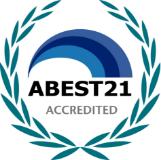Faculty
Urban/Regional Management Adjunct ProfessorYukihiro FUKUDA

- 【Specialized Fields】
- Civil Engineering
- 【Background】
- Yukihiro FUKUDA received the M.S. degree in civil engineering from Hokkaido University. After receiving the M.S. degree, he started working at Ministry of Construction and has served as Director-General for Meishi Kokudo National Highway Office of Chubu Regional Development Bureau, Director for Civil Engineering Department at Kochi Prefecture, Director for Road Department at Chugoku Regional Development Bureau, Director for Planning Department at Chugoku Regional Development Bureau, Director for Road Structure Department at National Institute for Land and Infrastructure Management (NILIM), Executive Director for Research Affairs at NILIM, and Director-General for NILIM.
- 【Publications】
- A study on the allocation of interchanges of Expressways, the 19th Japan Road Conference, 1991.
Geometric structure for on-street parking facilities, the 47th annual academic conference of JSCE, 1992.
Practical requirements for Advanced Cruise-Assist Highway Systems (AHS), the 24th Japan Road Conference, 2001.
A consideration for the effects of AHS introduction, the 24th Japan Road Conference, 2001.
Development of a traffic simulation model: Smart Infrastructure Performance Analyzer, the 24th Japan Road Conference, 2001.
Practical Application of Advanced Cruise-Assist Highway System, the 8th ITS World Congress Sydney, 2001.
Towards to the Realization of Advanced Cruise-Assist Highway System Service with Advanced Cruise-Assist Support Information Processing System, the 8th ITS World Congress Sydney, 2001.
- 【Message】
- As Japan faces issues such as declining and aging population, we are working to create cities and regions that are attractive to residents as well as visitors, while taking into account the perspectives of DX, GX, and disaster prevention, through collaboration among various stakeholders. We would like to consider how to develop mobility within and between cities that is easy to use, as well as how to develop infrastructure that supports comfort and safety.


